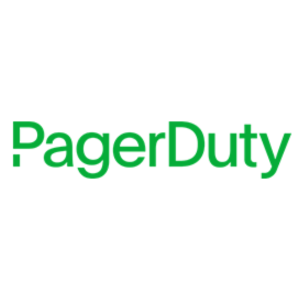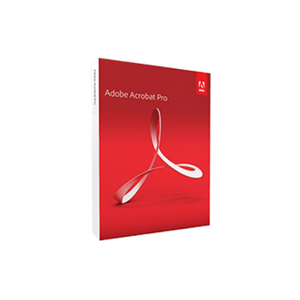Insights
INSIGHTS
All Topics
The best AI tools for meeting notes
We use one of our own meetings to compare three of the best artificial intelligence tools to see which offers the best meeting notes
Organisations mainly use generative artificial intelligence (AI) for research purposes and the creation of content. But generative AI has far broader application. In fact, one of the best ways to use AI is simple automation. That means finding the tedious tasks you dislike, finding the tasks that take a disproportionate amount of time and energy, and applying generative AI tools.
One potential target for AI is meeting notes. At Charity Digital, we typically assigned meeting notes to a reluctant individual, with vague and informal rules for them to follow. Note takers should follow an existing template, actively listen during the session, aim to use bullet points, assign actions and roles to individuals, review and organise notes after the session, only include necessary information, and share them with all involved. But the rules were not always followed.
Despite early roadblocks, AI tools are now able to take effective meeting notes, adhering to the above rules. So, with that in mind, we decided to test three of the best platforms – and we did so by using them all on one of our Teams meetings. Below, we explore the results.
Fathom
Fathom is an increasingly popular notetaking tool. It can record, transcribe, highlight, and summarise Teams meetings, with various other functionalities. Fathom is a really simple tool to incorporate into your Teams meetings: you can simply start operating the platform and it asks for admission into the session, which alerts all attendees that you’re using an AI for notetaking.
We’ve been using Fathom for notetaking for a few months now. The reason: reliability and clarity. In the meeting in which we tested AI platforms, Fathom effectively time-stamped each session, starting with more personal chit-chat and updates: ‘Discussions about the weather, Wimbledon, and dress rehearsals for upcoming shows’. It must be said: we live exciting lives.
The AI tool time-stamped each agenda point with a degree of accuracy, closely mimicking the points we’d specified. Fathom got most of the names right that we discussed – in terms of platforms and individuals – though a few were misspelled or misunderstood.
Fathom lacks excessive detail, which is a benefit and a disadvantage. It offers clarity but can feel a little vague. Each agenda point, for example, received roughly the same amount of detail – one small paragraph – despite each discussion requiring different levels of complexity and amounts of time.
Microsoft Copilot
The functionality of Copilot is wide-ranging. The Microsoft tool can boost data analysis, support effective scheduling, personalise writing, and improve memos, drafts, and presentations. Many organisations are now using the platform to take meeting notes.
Because Copilot is a Microsoft product, the tool is built into your Teams. That means you can automatically make use of the tool, but remember to always ensure that everyone on the call is comfortable with you using AI.
One huge benefit to Copilot is that, for latecomers, they can access a summary of what’s already been transcribed – allowing you to quickly get up to speed. You can also prompt Copilot in real time. That means, mid-call, you can improve the meeting by asking, for example: ‘Provide a question to move us forward?’ or ‘Create a table of pros and cons regarding the topic discussed’.
In terms of the outputs from our meeting, Copilot was certainly more thorough than Fathom, with segmented bullet points under each major heading. As with Fathom, the results felt clear and produced very few mistakes. But the tool was perhaps not as clear as Fathom, with some of the additional information feeling unnecessary, which makes it harder to know where to focus.
One benefit of Copilot was the action points. Under the heading of ‘Follow-up tasks’ the tool gave clear instructions, assigned to individuals, in short and succinct sentences that always got to the crux of the issue. I was assigned one such task under the name ‘Ewan’ – an understandable mistake, based on the pronunciation of my name, one that every AI platform made.
Otter.AI
Otter is an automated recording and transcription service, which uses an AI meeting assistant to record audio, write notes, capture action items, and generate summaries. The platform highlights snippets of your meeting notes to generate takeaways, then assign action items to teammates directly from Otter. It generates transcription in real time, which means that attendees of the meeting can scroll back to review existing notes – good news for latecomers.
In terms of our meeting, Otter was the most thorough platform. It started with a short summary of the entire meeting, then hyperlinked to the complete transcript, then gave action points. Otter, it seems, are aware that a lot of people will not want to access the full notes, start to finish, and prefer to glance at a summary to see if anything relevant to them was discussed.
We loved Otter’s layout, the way it presented the meeting notes, allowing us to skip straight to summary and action points, then going into more detail if necessary. But it did make a few mistakes. It called Joel both ‘Joel’ and ‘Joelle’ and presumed his attendance – even though he was absent. References to Joel were seen as Joel making specific points in the meeting.
Otter was the most thorough tool but made the odd mistake. But we really appreciated the output layout, which allowed readers to sift through in the quickest possible time, to find relevant information.
Conclusion: What AI is best for your meetings?
Our recommendation depends on your needs. Fathom, in our experience, provides the cleanest outputs and, in a short space of time, gets to the crux of what was discussed. But it could prove limited in terms of complexity. So Fathom would prove a great productivity tool if your charity is not dealing with the most complex matters – and needs quick, straightforward, clean notes.
Copilot has great built-in functionality, allowing you to enhance meetings, and the action points were evidently the best. Copilot is best placed for organisations that need a bit more detail, or need to add value to their meetings. As with Fathom, it might prove limited in terms of complexity.
Otter.AI certainly proved the most thorough, at least in the initial presentation of notes. And we particularly liked the hierarchy of its structured outputs: summary, link to transcript, action notes, then outline. But Otter made a few small mistakes, which could prove frustrating.
Hopefully the above will inform your decision-making and afford you a sense of the best platform to meet your needs.
Ioan Marc Jones
More on this topic
Recommended Products
Recommended Products
Our Events
Charity Digital Academy
Our courses aim, in just three hours, to enhance soft skills and hard skills, boost your knowledge of finance and artificial intelligence, and supercharge your digital capabilities. Check out some of the incredible options by clicking here.



















